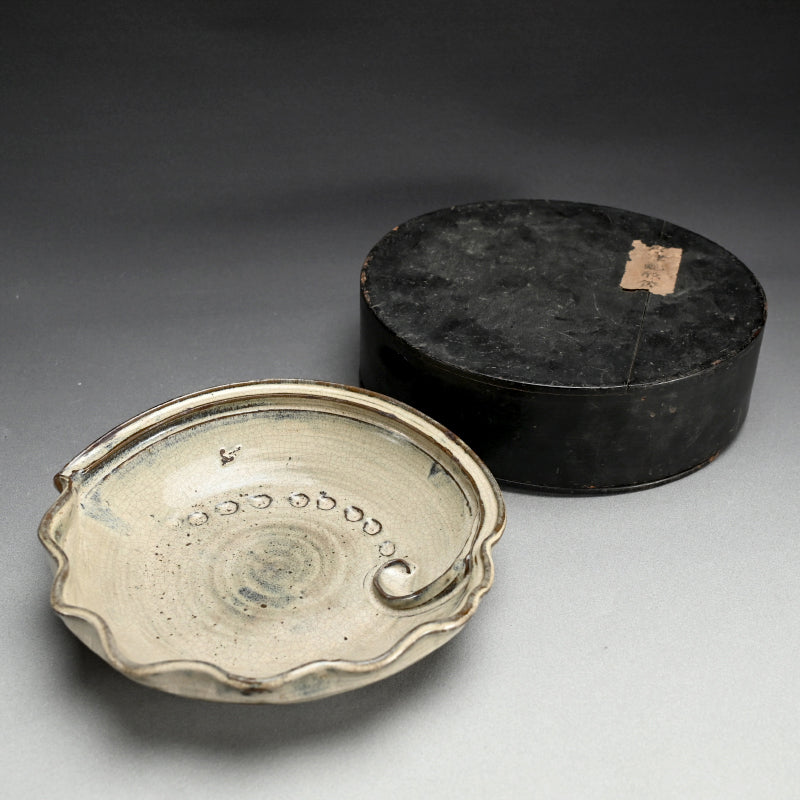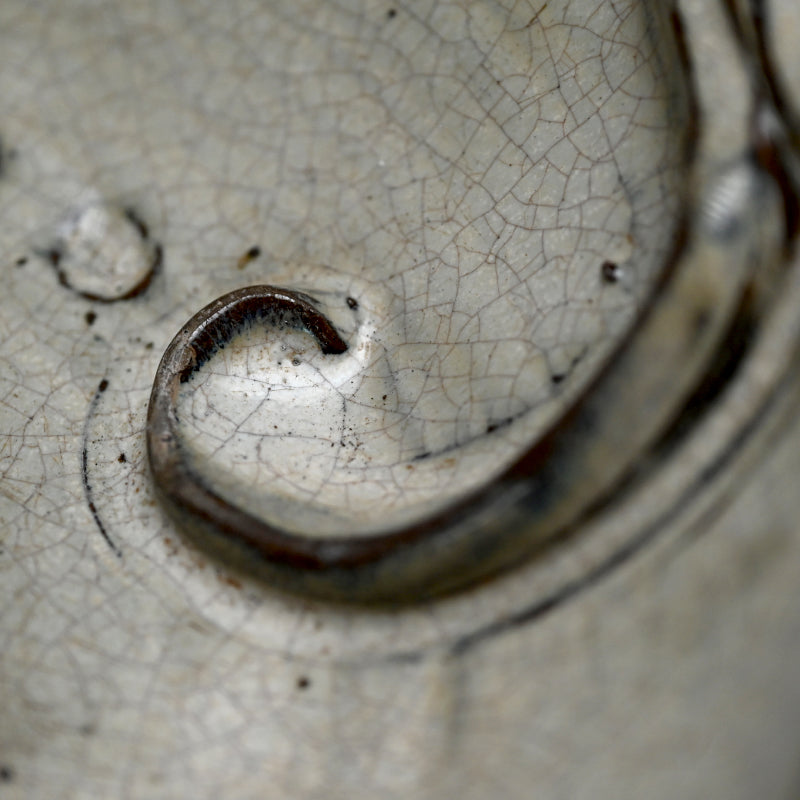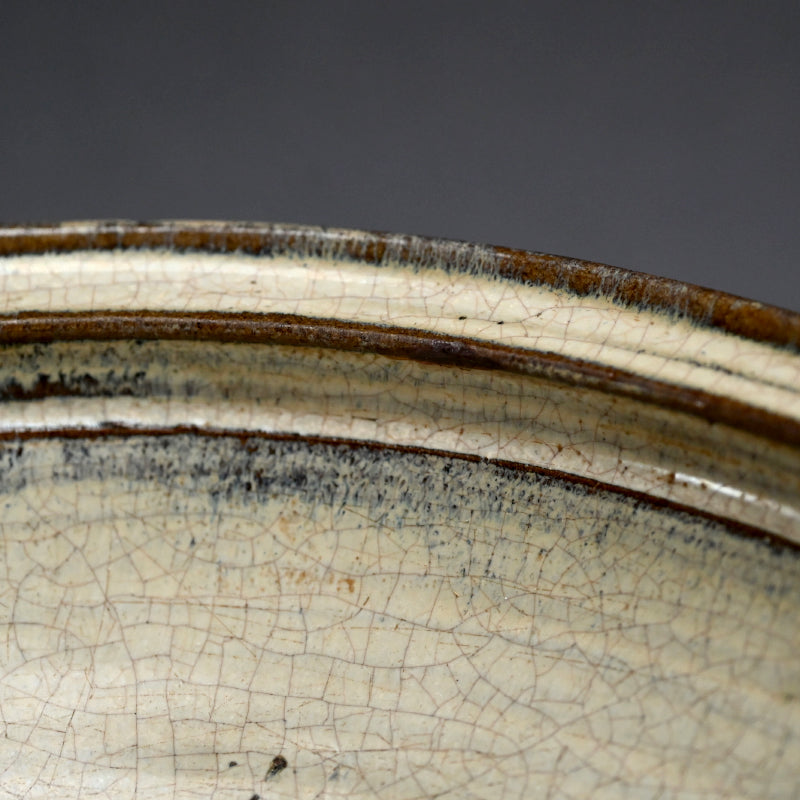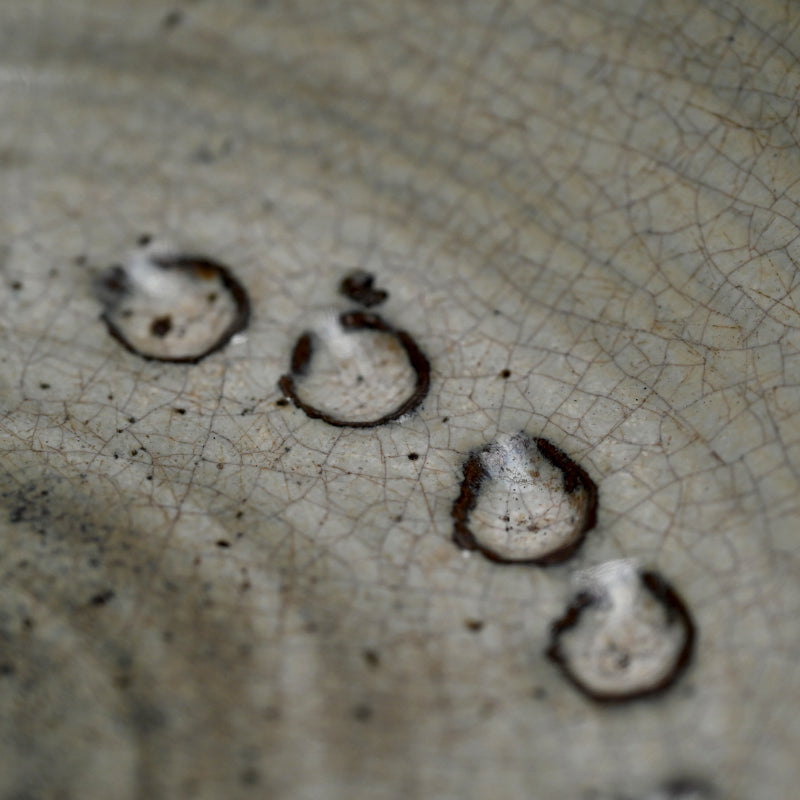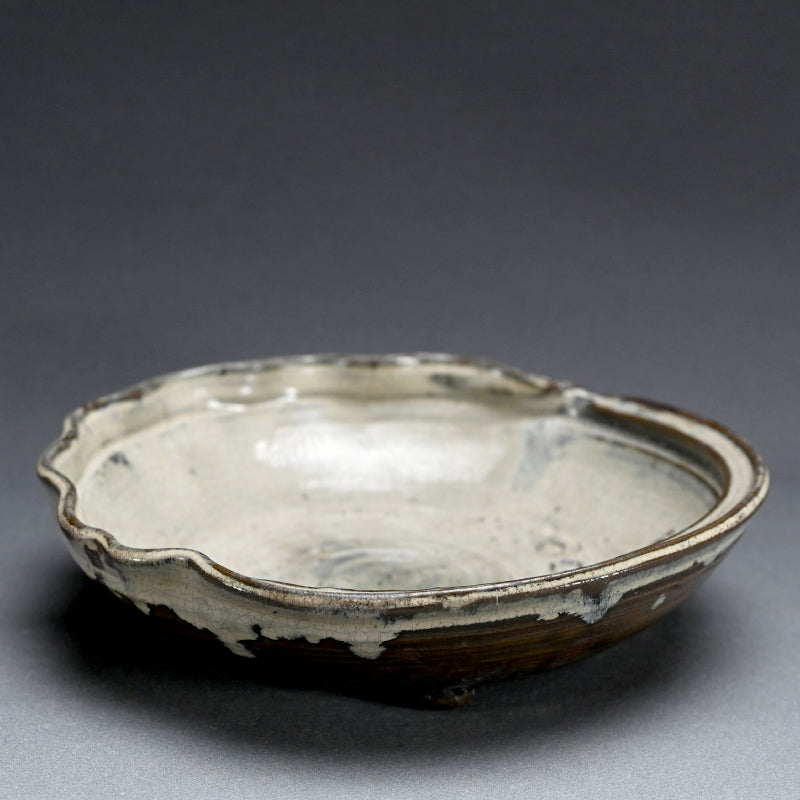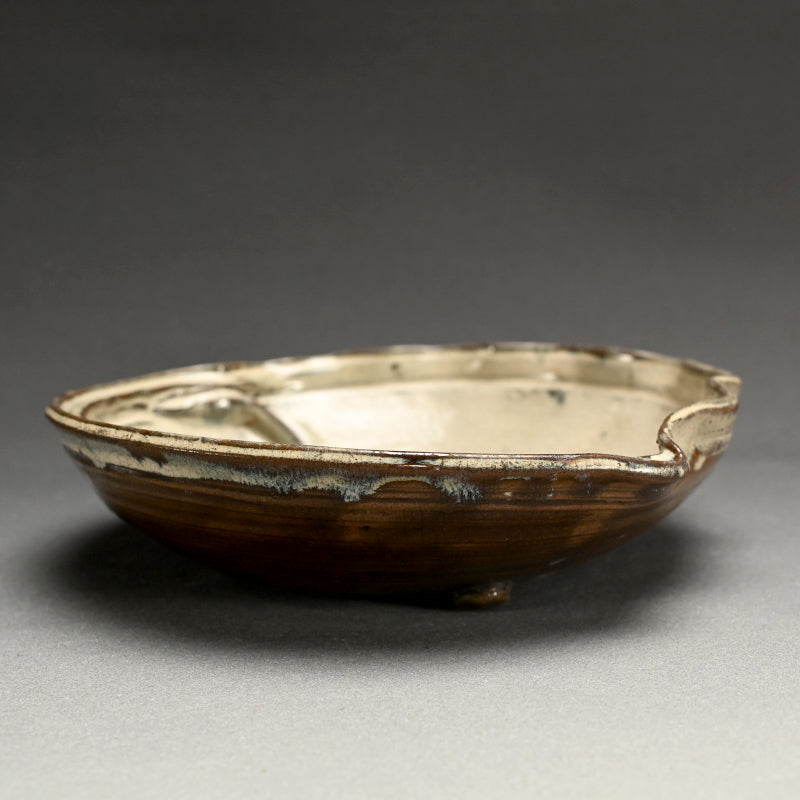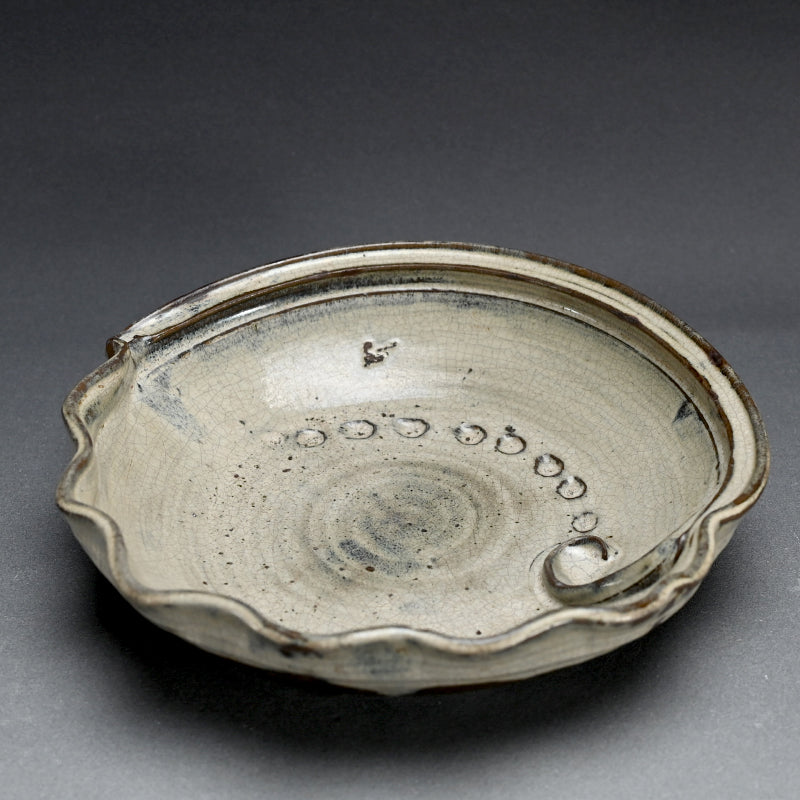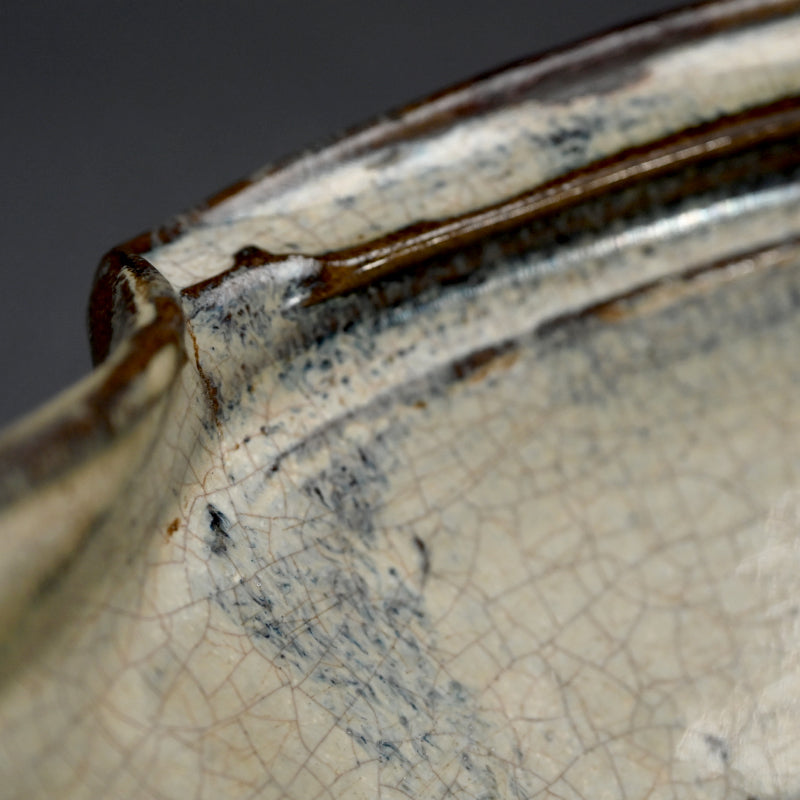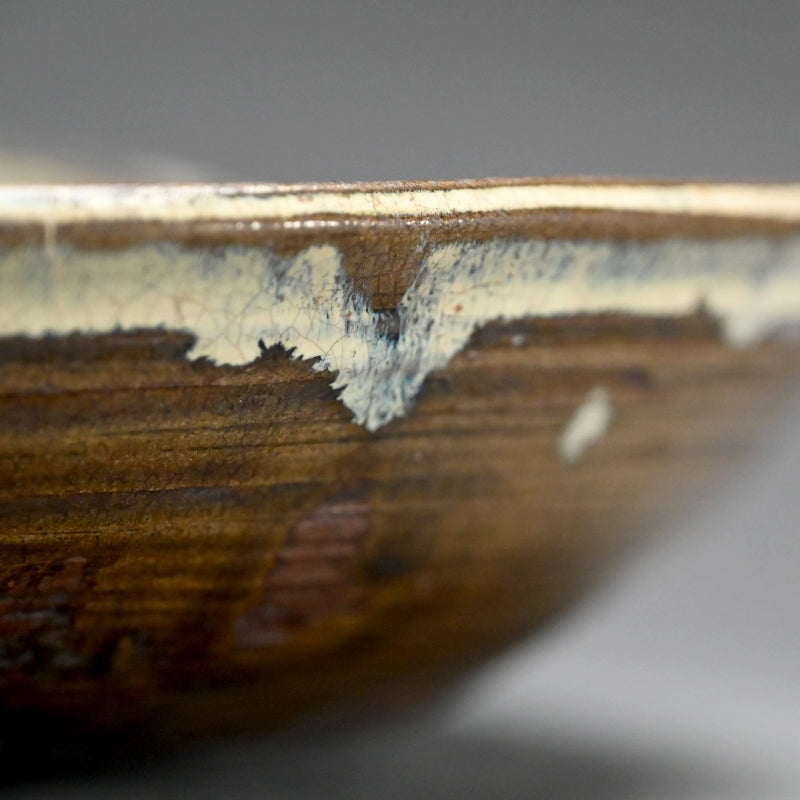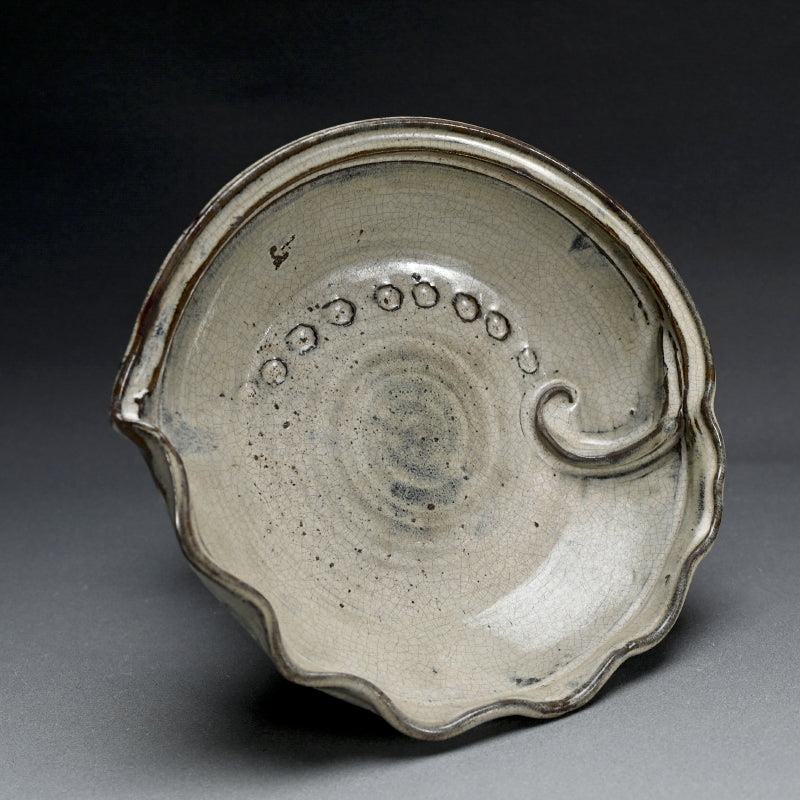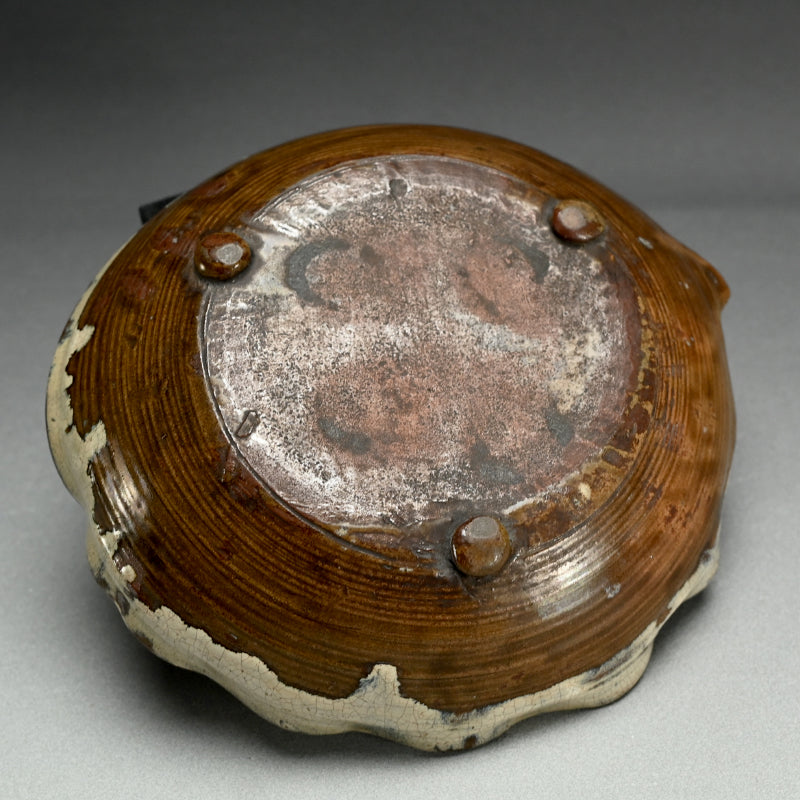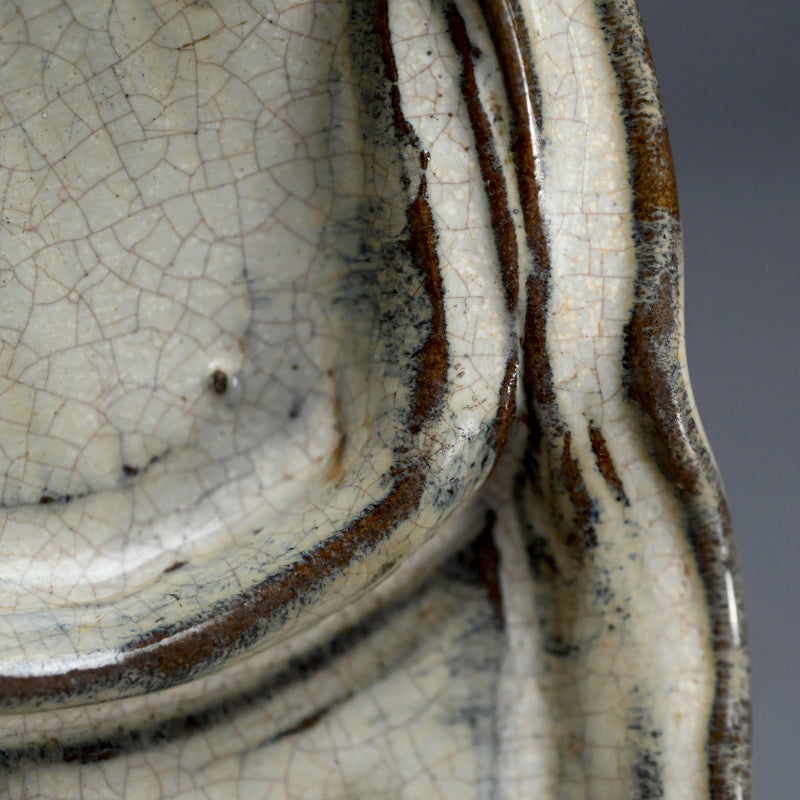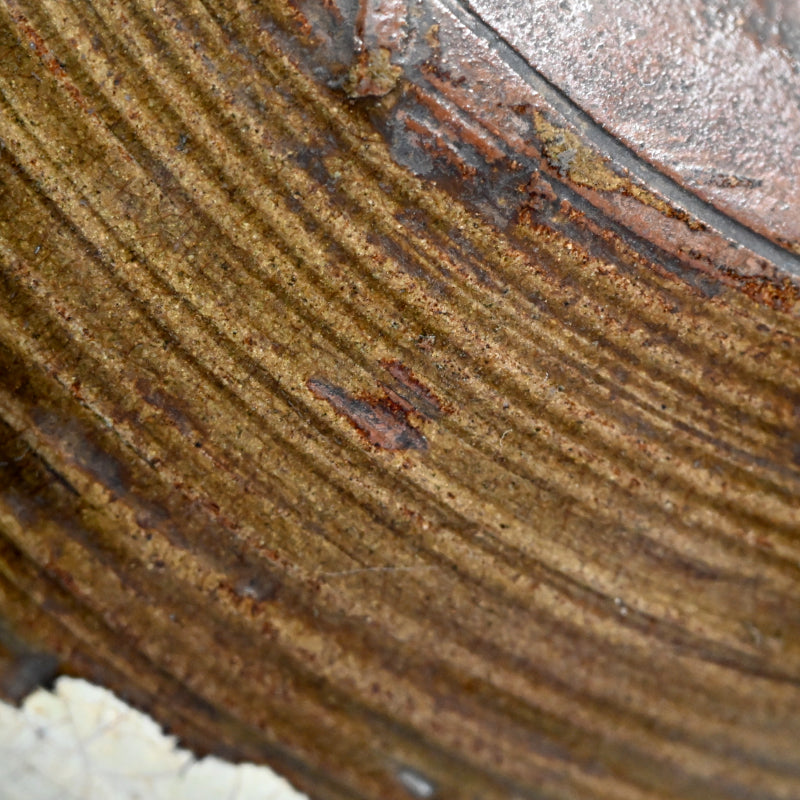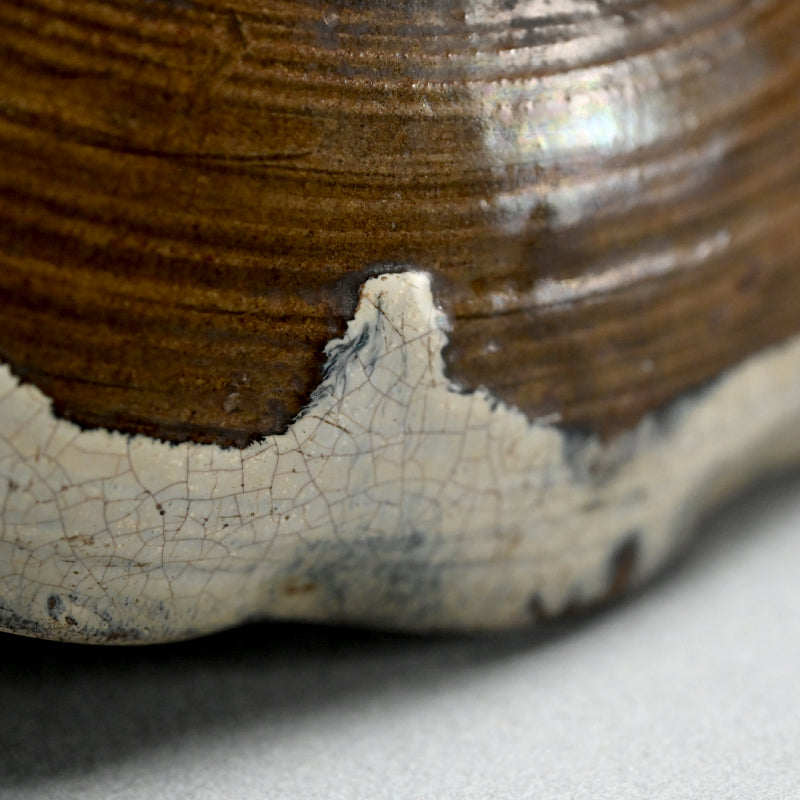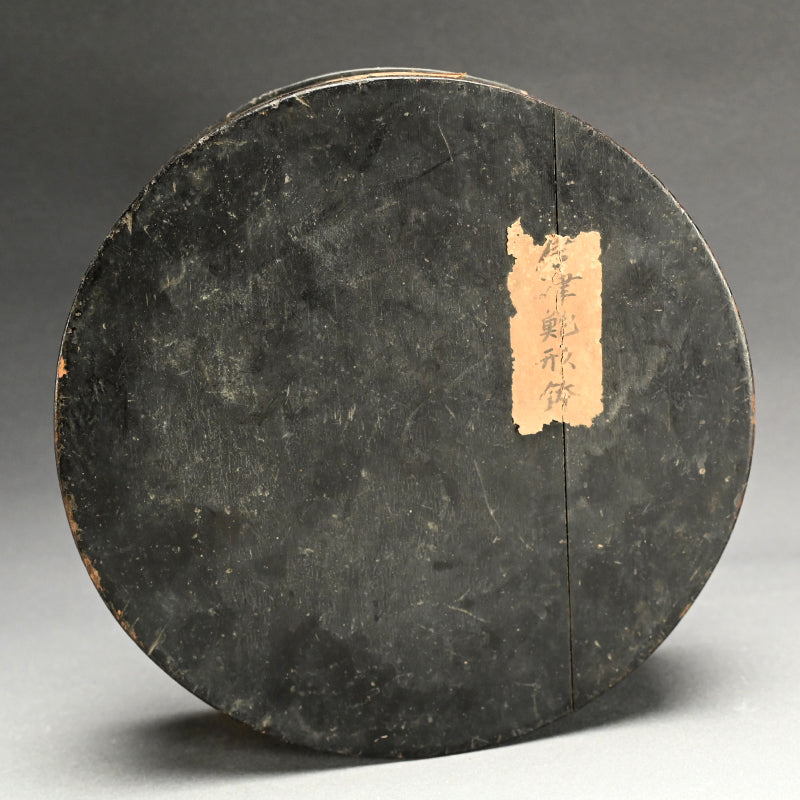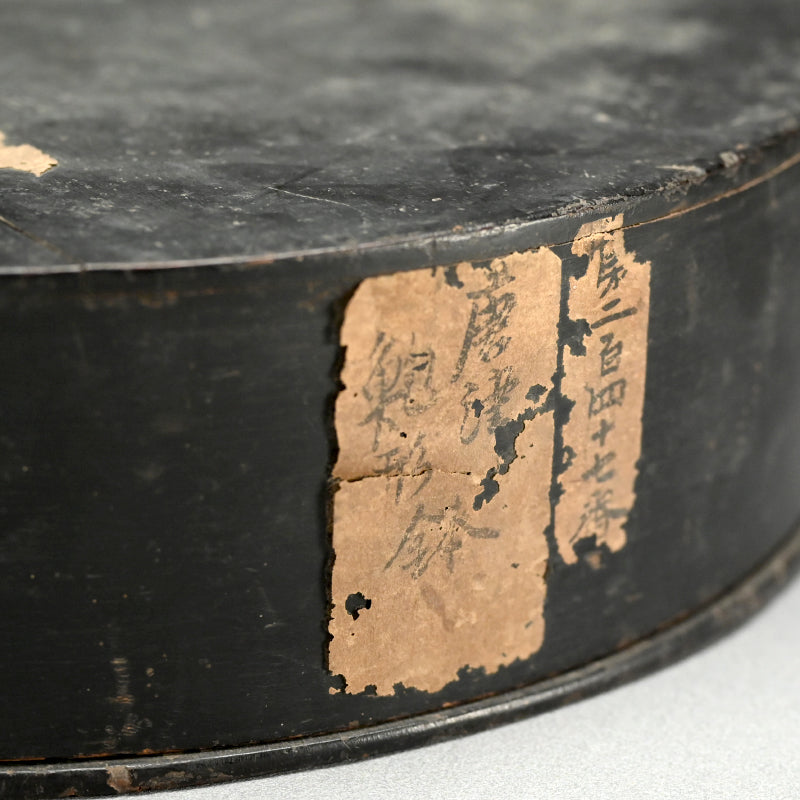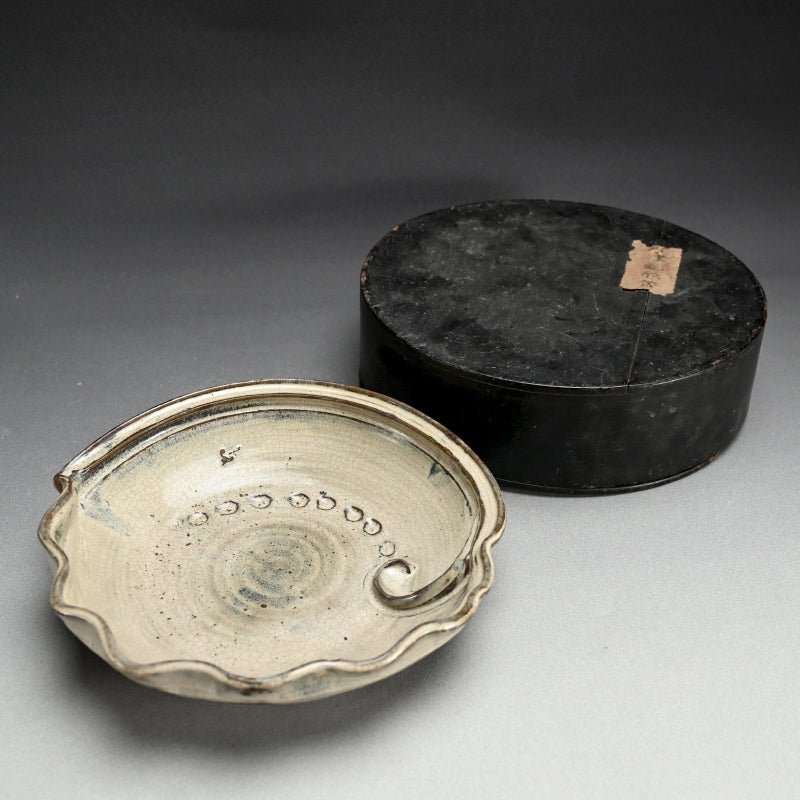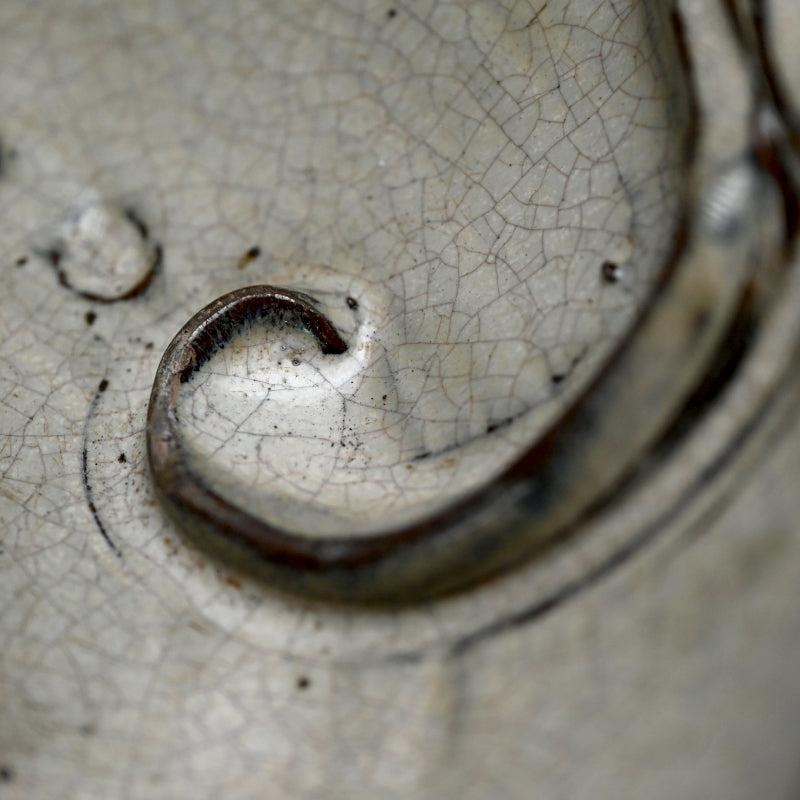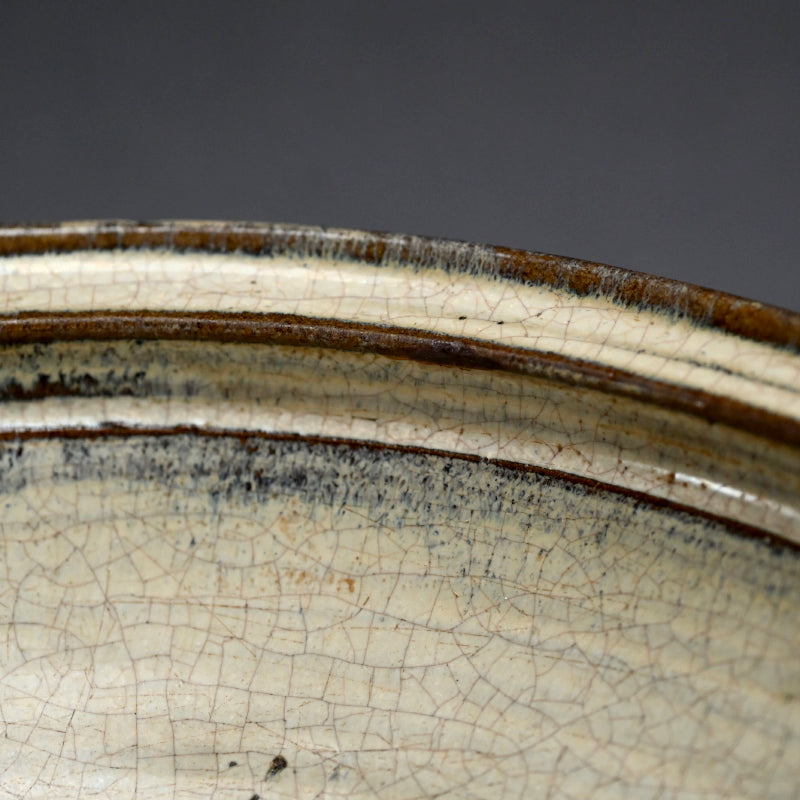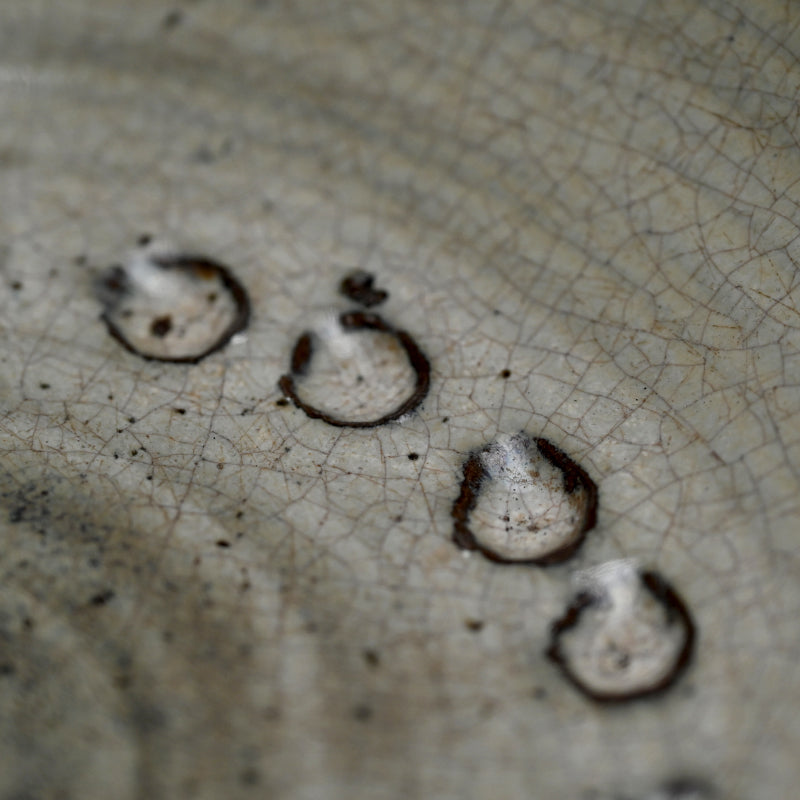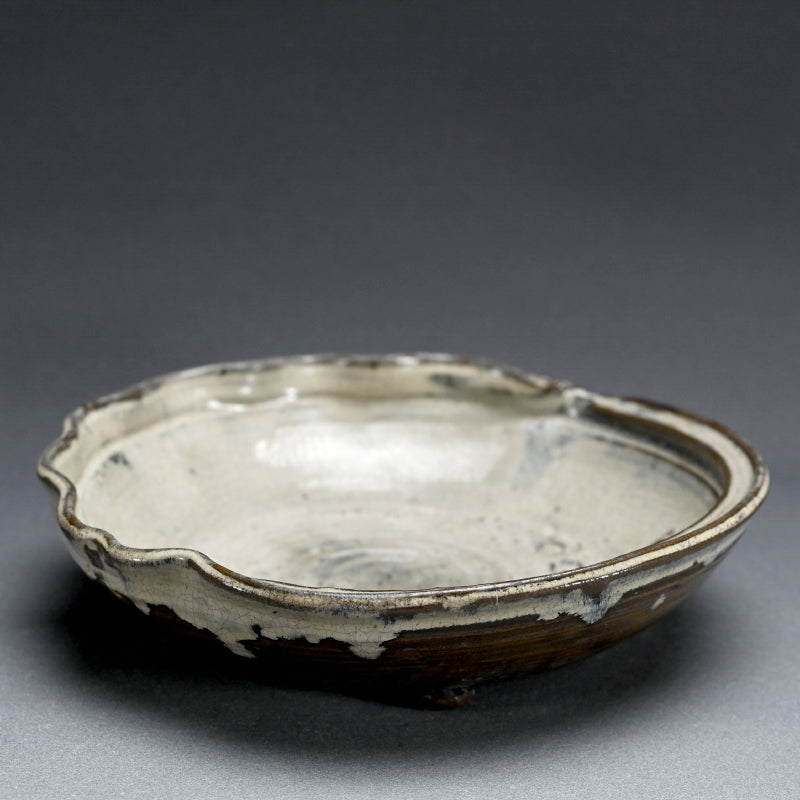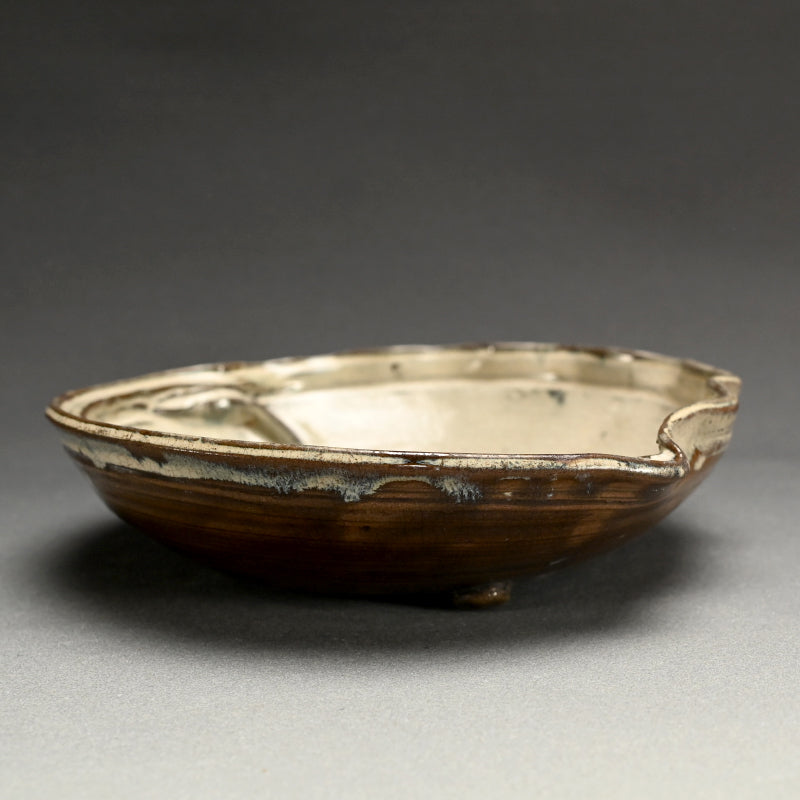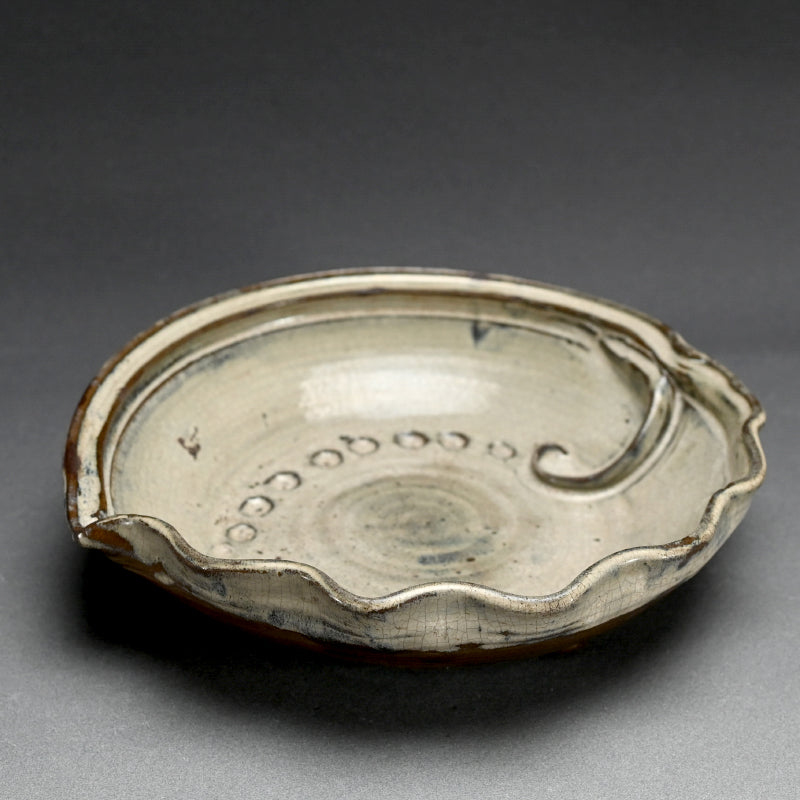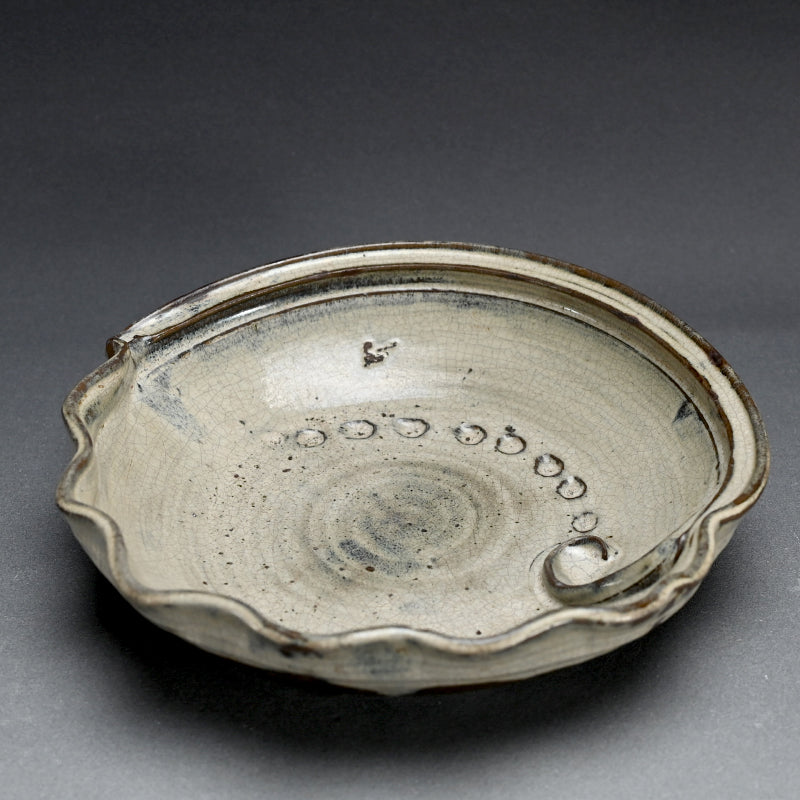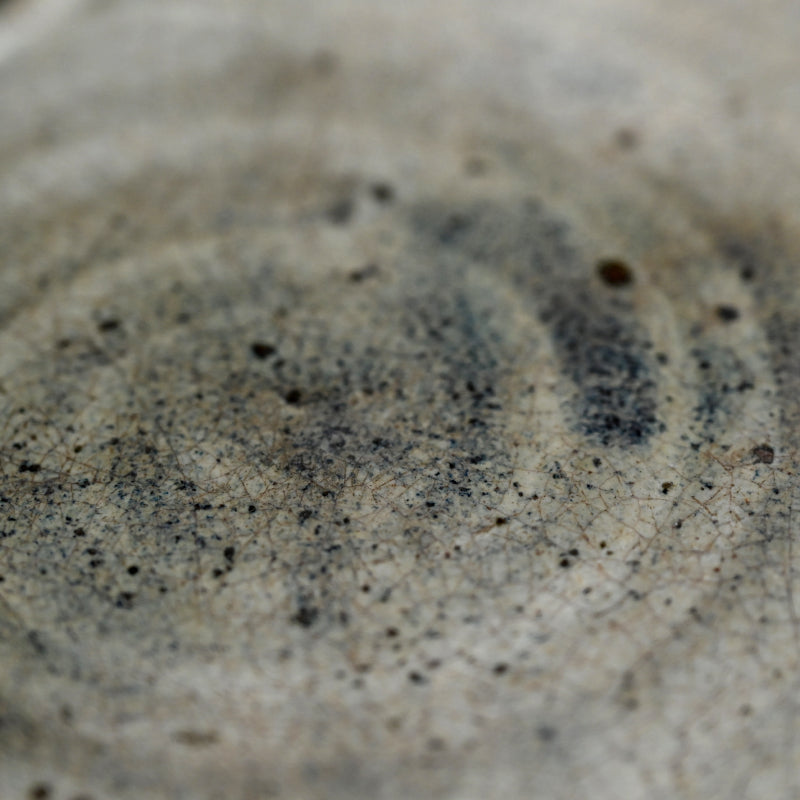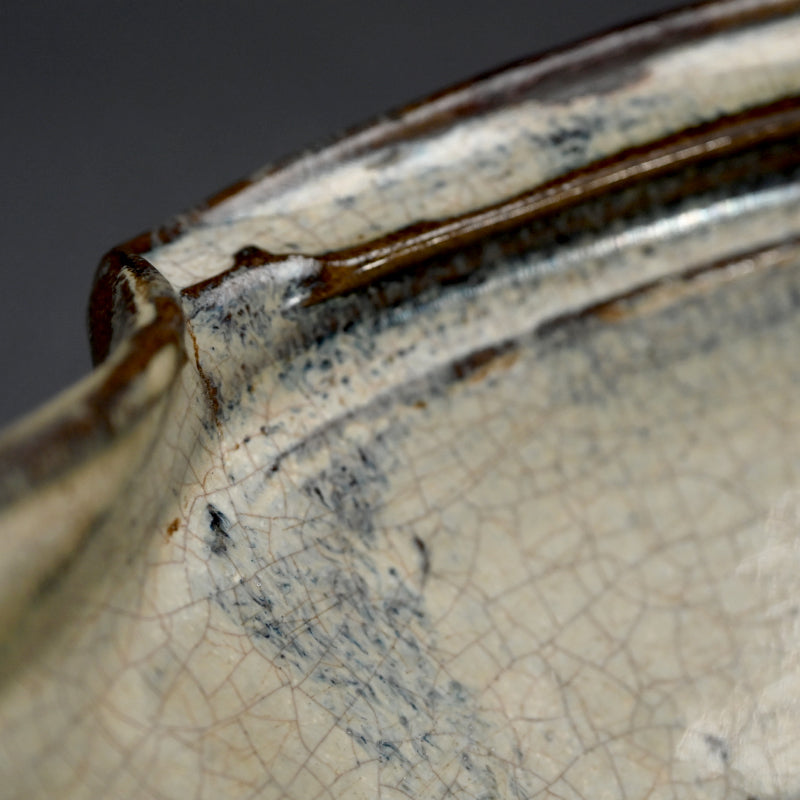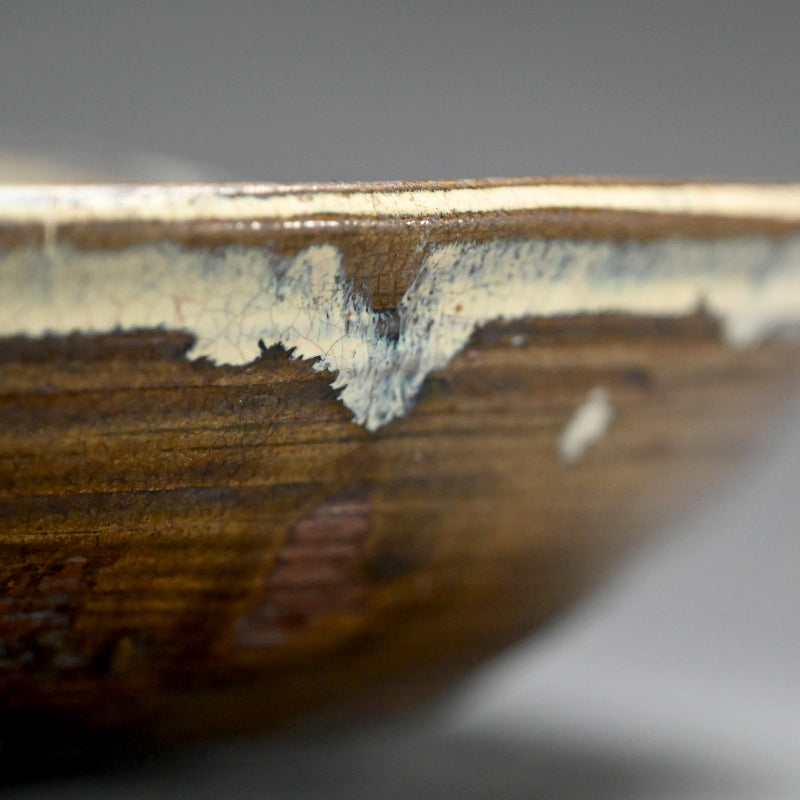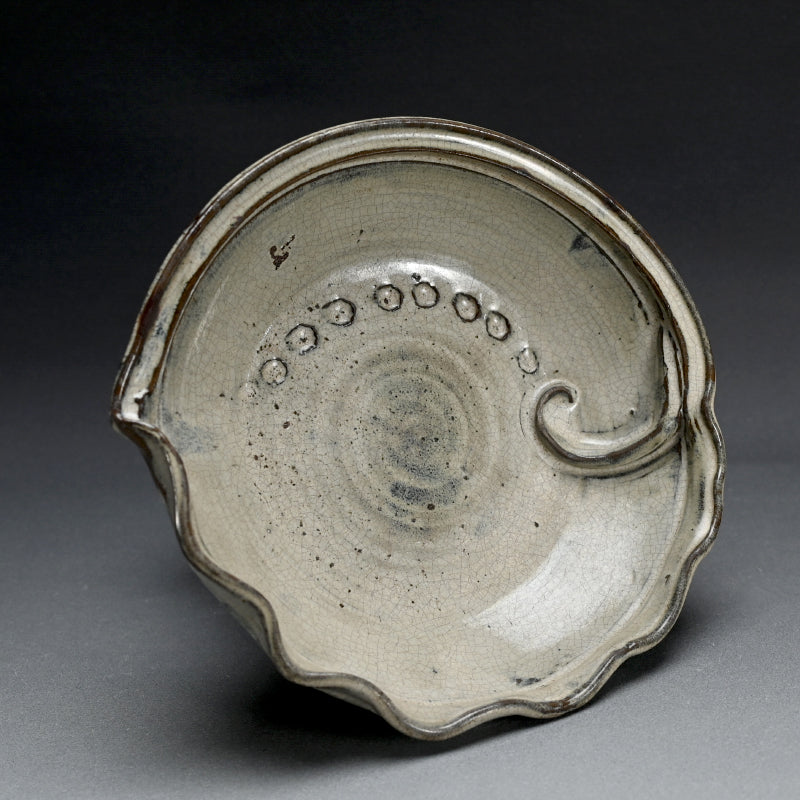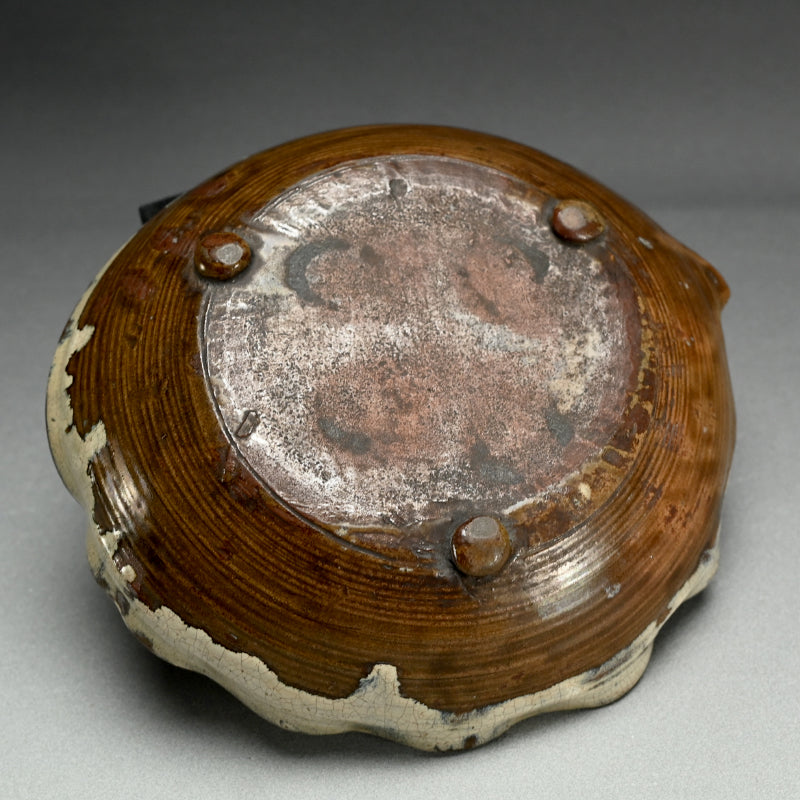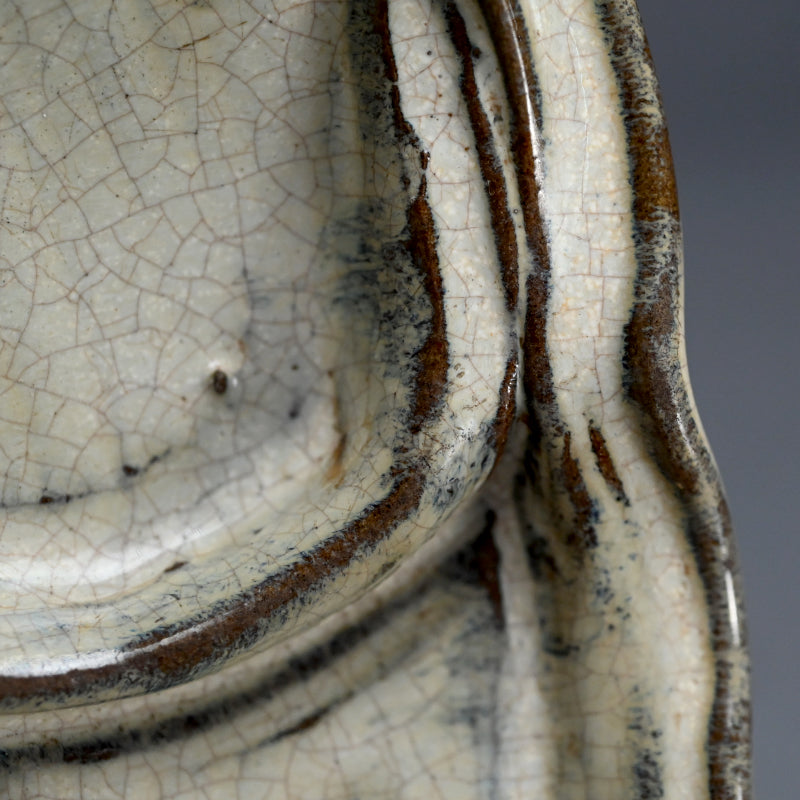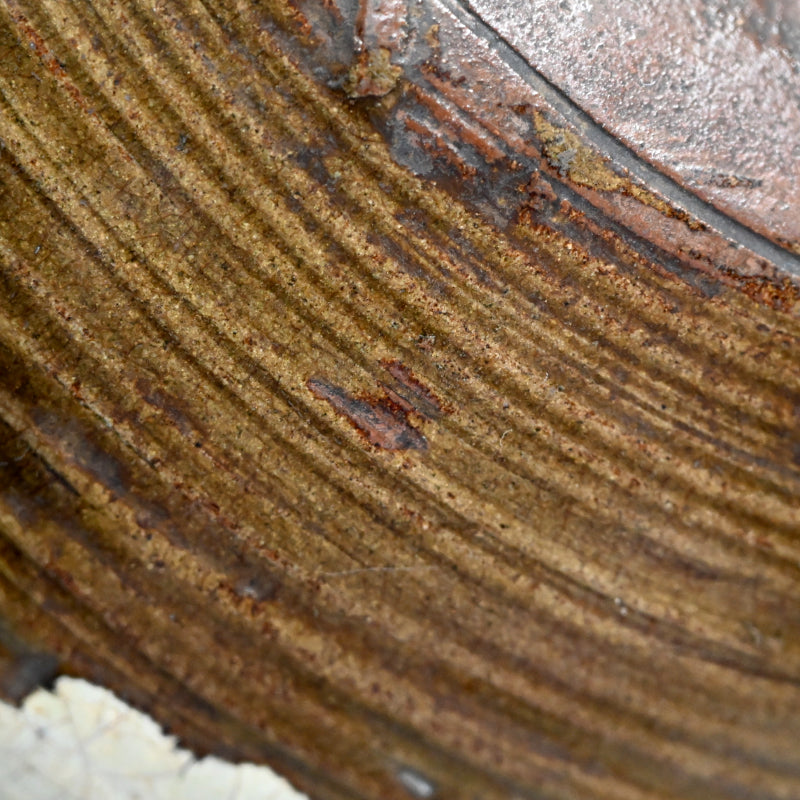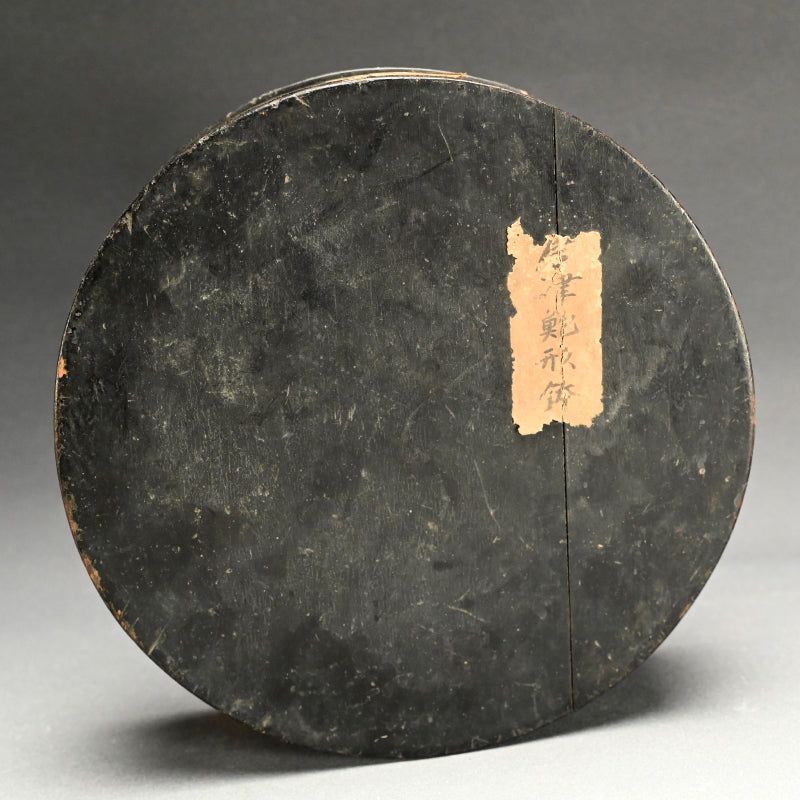18th century Katratsu Awabi Bachi Ceramic Dish
18th century Katratsu Awabi Bachi Ceramic Dish
Item Code: K698
Couldn't load pickup availability
A beautiful bowl covered in frothy Namako blue in the shape of an Abalone shell from the mid-Edo period kilns of Karatsu enclosed in a black lacquered magemono circular box titled Karatsu Awabi-gata Hachi. The basin is roughly 29 cm (11-1/2 inches) diameter, 7 cm (just less than 3 inches) tall and in excellent condition.
Karatsu pottery (Karatsu-yaki) is a celebrated Japanese ceramic tradition that originated in the late 16th century in Karatsu, Saga Prefecture, on the island of Kyushu, heavily influenced by Korean pottery techniques brought over by artisans during the Azuchi-Momoyama period (1573–1603). Karatsu pottery is known for its understated, rustic aesthetic, often characterized by natural glazes, earthy tones, and minimal decoration. Its designs align with the Japanese concept of wabi-sabi, emphasizing simplicity, imperfection, and the beauty of natural forms. Popular styles include E-garatsu (painted Karatsu), Madara-garatsu (spotted Karatsu), and Chōsen-garatsu (Korean-style Karatsu). Initially, Karatsu ware was produced to serve the practical needs of daily life, including tableware, and storage jars. However, with the rise of the Japanese tea ceremony, it became highly sought after by tea masters for its organic beauty and suitability for the ritual.
Share
